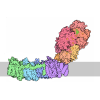| 登録情報 | データベース: PDB / ID: 8w6x
|
|---|
| タイトル | Neutron structure of [NiFe]-hydrogenase from D. vulgaris Miyazaki F in its oxidized state |
|---|
 要素 要素 | (Periplasmic [NiFe] hydrogenase ...) x 2 |
|---|
 キーワード キーワード | OXIDOREDUCTASE / Hydrogenase / NiFe complex / FeS cluster / Oxidized state |
|---|
| 機能・相同性 |  機能・相同性情報 機能・相同性情報
cytochrome-c3 hydrogenase / cytochrome-c3 hydrogenase activity / ferredoxin hydrogenase complex / [Ni-Fe] hydrogenase complex / ferredoxin hydrogenase activity / anaerobic respiration / 3 iron, 4 sulfur cluster binding / nickel cation binding / 4 iron, 4 sulfur cluster binding / periplasmic space ...cytochrome-c3 hydrogenase / cytochrome-c3 hydrogenase activity / ferredoxin hydrogenase complex / [Ni-Fe] hydrogenase complex / ferredoxin hydrogenase activity / anaerobic respiration / 3 iron, 4 sulfur cluster binding / nickel cation binding / 4 iron, 4 sulfur cluster binding / periplasmic space / electron transfer activity / metal ion binding / membrane類似検索 - 分子機能 Cytochrome-c3 Hydrogenase; Chain A, domain 2 / Cytochrome-c3 hydrogenase, C-terminal domain / NADH:ubiquinone oxidoreductase-like, 20kDa subunit / : / [NiFe]-hydrogenase, small subunit / Cytochrome-c3 hydrogenase, C-terminal / [NiFe]-hydrogenase, small subunit, C-terminal domain superfamily / NiFe/NiFeSe hydrogenase small subunit C-terminal / Nickel-dependent hydrogenases large subunit signature 1. / Nickel-dependent hydrogenases large subunit signature 2. ...Cytochrome-c3 Hydrogenase; Chain A, domain 2 / Cytochrome-c3 hydrogenase, C-terminal domain / NADH:ubiquinone oxidoreductase-like, 20kDa subunit / : / [NiFe]-hydrogenase, small subunit / Cytochrome-c3 hydrogenase, C-terminal / [NiFe]-hydrogenase, small subunit, C-terminal domain superfamily / NiFe/NiFeSe hydrogenase small subunit C-terminal / Nickel-dependent hydrogenases large subunit signature 1. / Nickel-dependent hydrogenases large subunit signature 2. / [NiFe]-hydrogenase, small subunit, N-terminal domain superfamily / Nickel-dependent hydrogenase, large subunit, nickel binding site / Nickel-dependent hydrogenase, large subunit / Nickel-dependent hydrogenase / Cytochrome-c3 Hydrogenase; chain B / Cytochrome-c3 Hydrogenase, chain B / Twin-arginine translocation pathway, signal sequence, bacterial/archaeal / NADH:ubiquinone oxidoreductase-like, 20kDa subunit / NADH ubiquinone oxidoreductase, 20 Kd subunit / [NiFe]-hydrogenase, large subunit / Twin arginine translocation (Tat) signal profile. / Twin-arginine translocation pathway, signal sequence / Few Secondary Structures / Irregular / Rossmann fold / Orthogonal Bundle / 3-Layer(aba) Sandwich / Mainly Alpha / Alpha Beta類似検索 - ドメイン・相同性 FE3-S4 CLUSTER / Chem-NFU / HYDROXIDE ION / IRON/SULFUR CLUSTER / Periplasmic [NiFe] hydrogenase large subunit / Periplasmic [NiFe] hydrogenase small subunit類似検索 - 構成要素 |
|---|
| 生物種 |  Desulfovibrio vulgaris str. 'Miyazaki F' (バクテリア) Desulfovibrio vulgaris str. 'Miyazaki F' (バクテリア) |
|---|
| 手法 |  X線回折 / 中性子回折 / X線回折 / 中性子回折 /  シンクロトロン / シンクロトロン /  分子置換 / 解像度: 1.04 Å 分子置換 / 解像度: 1.04 Å |
|---|
 データ登録者 データ登録者 | Hiromoto, T. / Tamada, T. |
|---|
| 資金援助 | 1件 |
|---|
 引用 引用 |  ジャーナル: Chem Sci / 年: 2023 ジャーナル: Chem Sci / 年: 2023
タイトル: New insights into the oxidation process from neutron and X-ray crystal structures of an O 2 -sensitive [NiFe]-hydrogenase.
著者: Hiromoto, T. / Nishikawa, K. / Inoue, S. / Ogata, H. / Hori, Y. / Kusaka, K. / Hirano, Y. / Kurihara, K. / Shigeta, Y. / Tamada, T. / Higuchi, Y. |
|---|
| 履歴 | | 登録 | 2023年8月30日 | 登録サイト: PDBJ / 処理サイト: PDBJ |
|---|
| 置き換え | 2023年9月13日 | ID: 7YW6 |
|---|
| 改定 1.0 | 2023年9月13日 | Provider: repository / タイプ: Initial release |
|---|
| 改定 1.1 | 2023年10月4日 | Group: Database references / カテゴリ: citation / citation_author
Item: _citation.country / _citation.journal_abbrev ..._citation.country / _citation.journal_abbrev / _citation.journal_id_ISSN / _citation.journal_volume / _citation.page_first / _citation.page_last / _citation.pdbx_database_id_DOI / _citation.pdbx_database_id_PubMed / _citation.title / _citation_author.identifier_ORCID |
|---|
| 改定 1.2 | 2023年11月15日 | Group: Data collection / カテゴリ: chem_comp_atom / chem_comp_bond / Item: _chem_comp_atom.atom_id / _chem_comp_bond.atom_id_2 |
|---|
| 改定 1.3 | 2024年11月13日 | Group: Structure summary
カテゴリ: pdbx_entry_details / pdbx_modification_feature
Item: _pdbx_entry_details.has_protein_modification |
|---|
| 改定 1.4 | 2025年3月12日 | Group: Database references / カテゴリ: pdbx_database_related / Item: _pdbx_database_related.content_type |
|---|
|
|---|
 データを開く
データを開く 基本情報
基本情報 要素
要素 キーワード
キーワード 機能・相同性情報
機能・相同性情報 Desulfovibrio vulgaris str. 'Miyazaki F' (バクテリア)
Desulfovibrio vulgaris str. 'Miyazaki F' (バクテリア) X線回折 / 中性子回折 /
X線回折 / 中性子回折 /  シンクロトロン /
シンクロトロン /  分子置換 / 解像度: 1.04 Å
分子置換 / 解像度: 1.04 Å  データ登録者
データ登録者 引用
引用 ジャーナル: Chem Sci / 年: 2023
ジャーナル: Chem Sci / 年: 2023 構造の表示
構造の表示 Molmil
Molmil Jmol/JSmol
Jmol/JSmol ダウンロードとリンク
ダウンロードとリンク ダウンロード
ダウンロード 8w6x.cif.gz
8w6x.cif.gz PDBx/mmCIF形式
PDBx/mmCIF形式 pdb8w6x.ent.gz
pdb8w6x.ent.gz PDB形式
PDB形式 8w6x.json.gz
8w6x.json.gz PDBx/mmJSON形式
PDBx/mmJSON形式 その他のダウンロード
その他のダウンロード 8w6x_validation.pdf.gz
8w6x_validation.pdf.gz wwPDB検証レポート
wwPDB検証レポート 8w6x_full_validation.pdf.gz
8w6x_full_validation.pdf.gz 8w6x_validation.xml.gz
8w6x_validation.xml.gz 8w6x_validation.cif.gz
8w6x_validation.cif.gz https://data.pdbj.org/pub/pdb/validation_reports/w6/8w6x
https://data.pdbj.org/pub/pdb/validation_reports/w6/8w6x ftp://data.pdbj.org/pub/pdb/validation_reports/w6/8w6x
ftp://data.pdbj.org/pub/pdb/validation_reports/w6/8w6x
 F&H 検索
F&H 検索 リンク
リンク 集合体
集合体
 要素
要素 Desulfovibrio vulgaris str. 'Miyazaki F' (バクテリア)
Desulfovibrio vulgaris str. 'Miyazaki F' (バクテリア) Desulfovibrio vulgaris str. 'Miyazaki F' (バクテリア)
Desulfovibrio vulgaris str. 'Miyazaki F' (バクテリア)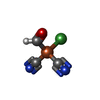
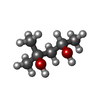
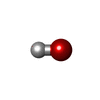


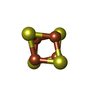
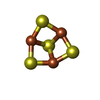








 試料調製
試料調製 解析
解析 ムービー
ムービー コントローラー
コントローラー



 PDBj
PDBj
